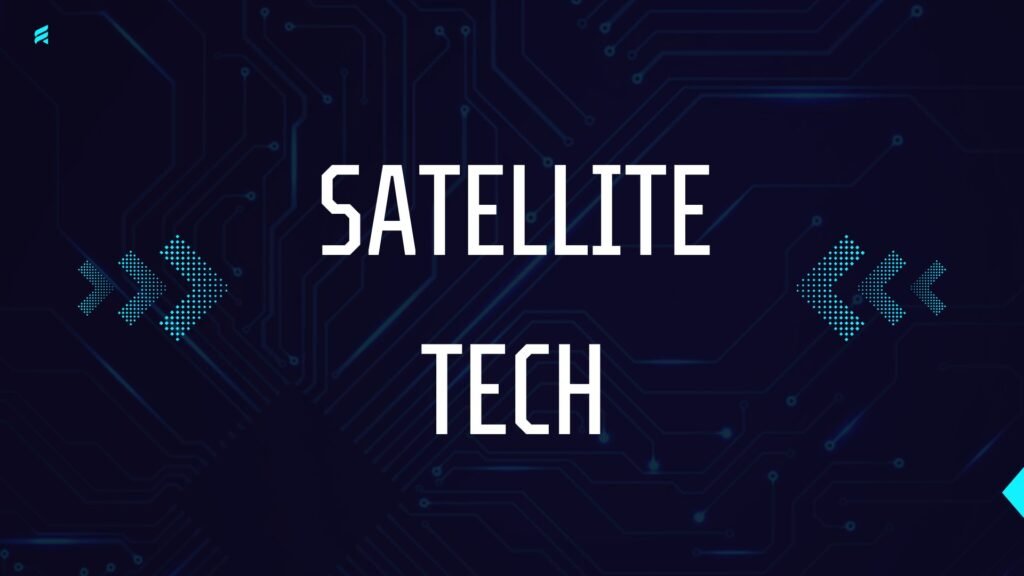
Over the last decade, satellite communication has evolved from a specialized tool for governments and research organizations to a globally accessible system impacting everyday life. At the heart of this evolution is smart satellite technology, a powerful advancement that's reshaping how the world connects, shares information, and prepares for the future.
Smart satellites are no longer just passive devices in orbit. They’re intelligent, responsive, and capable of independent decision-making. Let’s explore how these modern satellites work, why they matter, and how they’re revolutionizing communication across industries.
What Makes a Satellite Smart?

Traditionally, satellites functioned like mirrors, simply bouncing signals from one place to another. Every instruction came from Earth-based control centers, and adjustments were often manual. But smart satellite technology has changed all that.
A smart satellite is equipped with artificial intelligence, onboard computing power, and advanced automation. It can:
- Process data in space without sending everything back to Earth
- Detect and respond to threats like space debris
- Adjust its position and antenna direction autonomously
- Prioritize data flow based on current usage
This ability to operate with minimal human input leads to faster, more reliable, and more secure communication, even in challenging or unpredictable environments.
How Smart Satellites Work
The core difference lies in real-time responsiveness. These satellites are designed to think, act, and adapt.

Key Components:
- Onboard Data Processing: Enables satellites to analyze and filter vast amounts of data directly in space, reducing transmission delays.
- Adaptive Antennas: Allow satellites to direct signals precisely where needed and adjust to demand fluctuations.
- Machine Learning Algorithms: Improve satellite performance over time by learning from past data and usage patterns.
- Autonomous Navigation: Helps satellites avoid collisions and optimize orbits without waiting for commands.
This advanced architecture allows smart satellites to provide fast and high-quality connectivity, even in remote areas or during emergencies.
Revolutionizing Global Communication

One of the most impactful contributions of smart satellite systems is in the field of global communication. They’re connecting the unconnected and enhancing how we interact across borders.
Internet Access for Remote Areas
Millions of people in rural or isolated regions still lack reliable internet. Smart satellite constellations, operating in low Earth orbit, bring high-speed connectivity to these regions. This opens up opportunities in education, telemedicine, online business, and more.
Backup During Disasters
When ground infrastructure is damaged by natural disasters such as hurricanes, floods, or earthquakes, satellites ensure that emergency services stay connected. They provide live updates, enable coordination, and support search and rescue missions.
Enabling Modern Technologies
Technologies like 5G, smart cities, and autonomous vehicles rely on fast and secure data exchange. Satellites now support these systems by offering reliable connections even where ground networks fall short.
Real-World Applications Across Industries
Smart satellite technology isn’t just improving communication; it’s also transforming other industries by providing real-time, accurate, and large-scale data.
Agriculture
Farmers can now use satellite imagery to monitor crop health, detect pests, and manage water usage. This data-driven approach boosts productivity and helps manage environmental impact.
Environmental Monitoring
Satellites track deforestation, ocean health, melting glaciers, and air pollution. Governments and researchers use this information to shape climate policies and respond to environmental threats.
Urban Planning
City planners use satellite data to analyze traffic patterns, monitor infrastructure, and model urban growth. This leads to smarter, more sustainable development.
Innovation in the United States
The United States is one of the global leaders in satellite innovation. Government agencies and private companies are investing heavily in developing more capable, responsive, and cost-efficient systems.
NASA’s Role
NASA continues to launch cutting-edge satellites that monitor Earth’s systems, space weather, and support scientific research. These missions are crucial for understanding climate change and improving disaster preparedness.
Private Sector Contributions
Companies like SpaceX, OneWeb, and Amazon’s Project Kuiper are building satellite constellations that aim to deliver global internet coverage. Their advancements in launch technology, satellite manufacturing, and data processing are making space-based communication faster and more affordable.
Together, these efforts are strengthening the satellite ecosystem in the U.S. and making an impact worldwide.
Intelligence and Security in Space
As communication systems become more critical, the need for security and resilience also increases. Smart satellites offer several built-in protections.
- Encryption: Advanced encryption methods keep data secure and protect against hacking or unauthorized access.
- Threat Detection: AI systems onboard can detect irregularities or potential cyber threats and respond accordingly.
- System Redundancy: Satellites now include fail-safes and backup channels to ensure constant up time, even during equipment malfunctions or attacks.
These systems are particularly vital for sectors such as defense, finance, and emergency services, where communication downtime could have serious consequences.
Who Benefits from Smart Satellite Technology?
Smart satellites technology are no longer the domain of just space agencies. A wide range of industries and organizations benefit from these systems:
- Telecom companies expanding internet access
- Logistics and maritime firms tracking vehicles and cargo
- Oil and mining industries operating in off-grid areas
- Disaster response teams using live maps and satellite phones
- Scientific institutions monitoring Earth and space conditions
Even small startups and universities are launching their mini satellites (CubeSats) for research, innovation, or local services.
What’s Next?
The future of satellite communication is incredibly promising. We are likely to see:
- Laser-based Communication: Allowing data to travel even faster than with current radio frequencies
- Satellite Mesh Networks: Where satellites communicate with each other directly, creating seamless global coverage
- Miniaturization: Smaller, cheaper satellites with the same capabilities as larger models
These innovations will make communication more secure, faster, and more widely available — not only on Earth but also as humans venture further into space.
Final Thoughts
Smart satellite technology is more than a technical upgrade; it's a shift in how we connect, communicate, and cooperate across the globe. These intelligent systems enable everything from remote education to climate research and are laying the groundwork for a more connected, data-driven, and resilient future.
As the world continues to embrace space-based solutions, it’s clear that the role of satellites will only grow. Whether you’re a business owner, a teacher, or a student, the benefits of this powerful technology are reaching closer to home than ever before.








